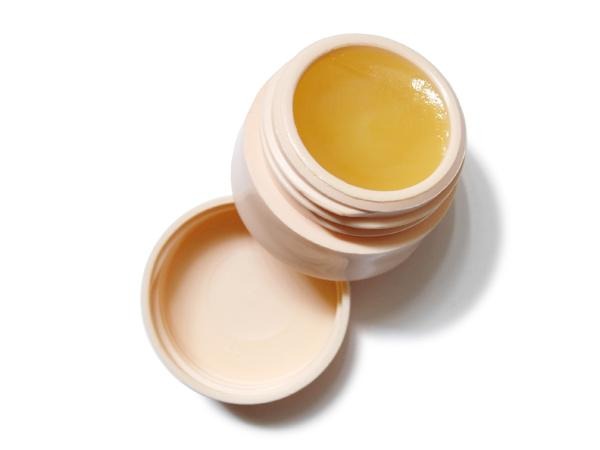Period Lighting and Silhouette Making
When the butler would have lit his master’s candle, however, he was forbidden. The latter was not going to retire. “I have many pamphlets to finish," said he to Catherine, "before I can close my eyes..” - Northanger Abbey by Jane Austen
 What exactly does this statement mean? Why would a person sitting in a drawing room full of candelabra need a personal candle? Let us step into that candlelit age of period lighting and try to get a better feel for Jane Austen’s time. Lighting “his master’s candle” refers to lighting a candle with which to light the way to bed. There were even special candle holders called chamber candlesticks for the purpose. They had a wide base to prevent wax from dripping on the hand or carpets, a handle for ease of carrying, and sometimes an attached snuffer to make it easy to put out the candle before going to sleep. Some chamber candlesticks even had a shield on the side opposite from the handle to prevent the flame from being blown out by an errant breeze in the hallway. Why not just light the hallway with candles in wall scones? It was expensive to light a hallway not in constant use and dangerous to leave the candles unattended, so candles were used only as needed.
What exactly does this statement mean? Why would a person sitting in a drawing room full of candelabra need a personal candle? Let us step into that candlelit age of period lighting and try to get a better feel for Jane Austen’s time. Lighting “his master’s candle” refers to lighting a candle with which to light the way to bed. There were even special candle holders called chamber candlesticks for the purpose. They had a wide base to prevent wax from dripping on the hand or carpets, a handle for ease of carrying, and sometimes an attached snuffer to make it easy to put out the candle before going to sleep. Some chamber candlesticks even had a shield on the side opposite from the handle to prevent the flame from being blown out by an errant breeze in the hallway. Why not just light the hallway with candles in wall scones? It was expensive to light a hallway not in constant use and dangerous to leave the candles unattended, so candles were used only as needed.
Strike a Match?
The dimness of the light her candle emitted made her turn to it with alarm; ...Alas! It was snuffed and extinguished in one. A lamp could not have expired with more awful effect. Catherine, for a few moments, was motionless with horror. It was done completely; not a remnant of light in the wick could give hope to the rekindling breath. Darkness impenetrable and immovable filled the room. - Northanger Abbey
A candle going out totally overset Catherine. Why doesn’t she simply relight it? The idea of quick lighting matches started with the discovery of the highly flammable element phosphorous in 1669 by a German merchant who dabbled in alchemy named Henning Brand. Several 17th century chemists used the newly discovered element to manufacture devices that could be used to light a fire quickly, but since phosphorus cost the equivalent of several hundred pounds per ounce and was highly unstable, these first matches were terribly expensive and rather dangerous. In 1781, a group of French chemists developed the phosphoric candle or ethereal match. It consisted of a sealed glass tube containing a twist of paper tipped with phosphorus, which ignited when it was exposed to oxygen by breaking the glass. However these matches were expensive and the delicate glass tube cracked easily frequently bursting into flame in the pocket! It would be 1826 before John Walker, an English pharmacist, created the strike-anywhere friction matches. Wood splints tipped with potassium chlorate, antimony sulfide, and gum Arabic ignited when the match head was drawn through a fold of fine sandpaper. By 1829, similar matches known as “Lucifers” were sold throughout London. Thus it seems unlikely that the butler in Northanger Abbey was about to strike a match to light “his master’s candle” or that Catherine would have a match.
Flint and Steel
...how much better to find a fire ready lit, than to have to wait shivering in the cold till all the family are in bed, as so many poor girls have been obliged to do, and then to have a faithful old servant frightening one by coming in with a faggot! - Northanger Abbey
Flint and steel remained the main method of kindling a fire until the mid 19th century. This method involved forcefully striking a piece of flint against a piece of steel so that the resulting spark fell on tinder or a rudimentary match, made by wrapping a bit of cotton or paper coated in wax about one end of a splint of wood. It often took several strikes to get a good spark that ignited the tinder or match.  Flint and steel came as a kit in a small round box made of wood or tin called a tinder box. It contained a piece of steel made in a handle shape so that it was easy to grasp and a chunk of sharpened flint.
Flint and steel came as a kit in a small round box made of wood or tin called a tinder box. It contained a piece of steel made in a handle shape so that it was easy to grasp and a chunk of sharpened flint.
The tinder box which held the flint and steel was used to contain the material called tinder that would be ignited with the sparks. Tow was the most commonly used tinder. It is a by product of flax or linen production. When flax fibers are combed before being spun into linen, the coarse and broken fibers are removed. This scrap is called "tow" in Old English. If dry, it is highly flammable. The process of striking a spark involves shaving tiny pieces off the steel with the sharp edge of the flint. The sparks come from the friction heated steel shavings, not the flint. To strike a spark, the steel was pointed into the tinderbox to direct the sparks into the tinder. Then the flint was struck down the steel at a shallow angle so that the steel remained close to the tinder without hitting the tinder with the flint. Fingers had to be kept back from the edge of the steel to avoid cutting them with the sharp flint. When the flint became dull, it was chipped back to form a new sharp edge. On cold winter mornings a spark had to be struck in the dark with cold hands. This was generally the task of the under cook who rose first to get the kitchen fires going for the day. Servants could then carry faggots from the kitchen fire to kindle fires in the rest of the house.
Candles
This is strange indeed! I did not expect such a sight as this! An immense heavy chest! What can it hold? Why should it be placed here? Pushed back too, as if meant to be out of sight! I will look into it — cost me what it may, I will look into it — and directly too — by daylight. If I stay till evening my candle may go out. - Northanger Abbey
Candles were made of beef tallow or beeswax or both. Beef tallow candles though cheaper, smoked, smelled bad, and were rather soft and tended to bend. The gentry preferred beeswax because it smelled better and gave off less smoke. Some thrifty households used tallow candles in the servant’s quarters. Since beeswax sticks to molds, this type of candle could only be made with the dipping method. Wicks of twisted cotton or linen were draped over a length of wood to allow creation of multiple candles at once. The wood when lowered and raised repeatedly over a pot of melted beeswax dipped the wicks into the hot wax and then out to cool. Gradually layer after layer of wax built up around the wicks eventually producing a pair of long thin tapers on each end of the draped wick. The piece of wick that had been over the wood was not coated with wax. It could then be cut separating each pair of candles. Tallow candles were made by pouring rendered beef tallow into candle molds with a wick held in the middle by a piece of wire laid atop the mold. Once the tallow cooled, the mold, which contained multiple long slender openings, was opened. It split in half for easy removal of the candles. Sometimes some beeswax was mixed with the tallow to produce a candle less prone to bending or the tallow candle was coated in a few layers of beeswax to strengthen it.
A Source of Entertainment
Candles also provided a source of evening entertainment. A candle brought close to a person’s profile could cast a shadow on a piece of paper attached to the wall that might be drawn around and blacked in with lampblack or gauche resulting in a silhouette. In those days before photography, a silhouette provided a simple and inexpensive way of taking someone’s likeness. Because anyone could create a silhouette, their making became a popular party activity in the 18th and 19th century. Jane Austen did not portray this activity in her books but silhouettes of Austen family members exist. The term "silhouette" derived from the name of Etienne de Silhouette (1709-1767), a Frenchman who was a finance minister to Louis XV. Etienne de Silhouette, though not the originator of this type of tracing, became synonymous with the art form because of his ability to create elaborate pieces. The English called them "shades." Making silhouettes was a favorite pastime at the court of George III. The King loved to throw shade parties.  In 1775, Mrs. Samuel Harrington invented the pantograph.
In 1775, Mrs. Samuel Harrington invented the pantograph.
This mechanical device could be used to enlarging or reduce the size of a drawing. A silhouette, normally made life size, could be reduced to a smaller size using the pantograph. These miniature silhouettes were extremely popular because they could be used in jewelry such as lockets and cameos. Popular decorating trends also influenced silhouettes. During the period when Wedgwood was marketing decorative copies of Sir William Hamilton’s collection of Etruscan red-figure vases, it became popular to paint silhouettes in terracotta colored gauche so that the finished product took on the appearance of a red figure on a black background. The candle, its use, and accessories helped to define the world in which Jane Austen lived and portrayed in her books. Throwing a little light on the candle may illuminate Jane Austen’s novels.
*****
Sharon Wagoner is Curator of The Georgian Index. Visit this site for a historical tour through Regency London!
Illustration Sources: Chamber Candle, Dover, copyright free. Flint & Steel illustration originally from William Smith, Morley: Ancient and Modern, London, 1886. I took this illustration from Raffaella Sarti, Europe at Home: Family and Material Culture 1500-1800. London: Yale University Press, 2002. copyright free Silhouette Making: Artist Unknown
If you don't want to miss a beat when it comes to Jane Austen, make sure you are signed up to the Jane Austen newsletter for exclusive updates and discounts from our Online Gift Shop.



1 comment
[…] Most of the information for this post came from Jane Austen’s World, https://janeaustensworld.wordpress.com/2012/10/09/shades-from-jane-austen/ and the Jane Austen Centre. https://www.janeausten.co.uk/period-lighting-and-silhouette-making/ […]
Silhouette – A Poor Man’s Portrait | Austen Authors
Leave a comment
This site is protected by hCaptcha and the hCaptcha Privacy Policy and Terms of Service apply.